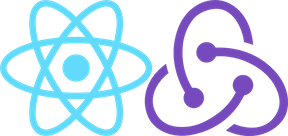The CI CD pipeline: A developers guide
Changes are validated by an automated build, with unit and integration tests ensuring any changes made haven’t broken the application. If testing uncovers a conflict between new and existing code, CI makes fixing bugs faster and more frequent. A business may have multiple source portions of the CI/CD pipeline depending on the various projects in development — such as a server-side platform using C++, website applications using Java and mobile applications using Go. Similarly, coding features may vary between IDEs and projects due to different standards or vulnerabilities between projects, such as enterprise production systems versus a consumer app. In case of real-life enterprise scenario or complex environments (e.g., a heterogenous landscape including Cloud and On-Premise), it’s difficult to use CI/CD pipeline for deployment.

CI/CD pipelines are dynamic entities that require frequent refinement and regular developer training to operate efficiently and reliably. Once on a test server, the build can be configured to simulate a production environment; for instance, access to test databases and other applications may be enabled for “real-world” functional and performance evaluations. Much of this relies on automation but may involve human testing to shake down nuances of the build.
What Is Continuous Delivery (CD)?
CD can cover everything from provisioning the infrastructure to deploying the application to the testing or production environment. This last step can be approved by a human, but should not require any manual effort. Automated pipelines can help prevent errors that result from manual processes, allow for rapid product iterations, and provide consistent feedback during the development process. Each step of a CI/CD pipeline is a subset of tasks grouped into pipeline stages, which we discuss in detail further down in this article. The common theme through these three continuous paradigms is a heavy reliance on automation and testing to drive the process. Ideally, a developer need only “press the button” to whisk a new build from the code repository through testing and on to delivery or deployment.

CI/CD pipelines are a practice focused on improving software delivery throughout the software development life cycle via automation. Jenkins is an open-source multi-platform software for continuous integration/continuous delivery and deployment (CI/CD) in DevOps. Jenkins uses CI/CD pipelines to automate the software development and deployment workflows.
IBM Connected Trade Platform helps power the digitization of trade and supply chain financing
The service allows us to deploy the solution artifacts (e.g., MTA Archives) along with its content (e.g., SAP Integration Suite content) and manage the deployment and operation. As discussed earlier, Continuous Delivery (CD) is the extension of Continuous Integration (CI) which helps us automatically build, test, and release the code to production. Below image illustrates a high-level overview of different components and features of it.

Configure your CI/CD pipeline to deploy continuously, on a set schedule, or manually with the push of a button. For help developing your app locally, running it in a preview environment, or deploying to a Kubernetes cluster hosted by any public cloud provider, sign up for a free Architect account and give it a spin. Once you open a PR, your SCM sends a notification to your CI/CD platform, or your CI/CD platform may periodically scan your SCM for new PRs. Once your CI/CD platform is aware of the PR, it begins running the steps defined in your CI/CD pipeline.
Creating First Jenkins Admin User
Security assessments and real-time monitoring designed with containers and container orchestration tools like Kubernetes can go a long way in ensuring your containers remain secure. Like traditional DevOps, culture and mindset are more important than specific tools when it comes to DevSecOps. However, just as “DevOps tools” rose to popularity along with DevOps, there are DevSecOps tools that help teams effectively implement security in their CI/CD pipelines. You configure GitHub to block PRs from being merged until all tests have passed by setting up branch protection rules.
Organizations that adopt CI/CD find their productivity improves significantly. The trick is coming up with a deployment strategy that works for the individual organization. Rather than sitting in a queue, code actually makes it out into the real world. Uptime is a measure of stability and reliability and whether everything is working as it should. When the CI/CD strategy is automated, ops leaders can focus more of their time on system stability and less time on workflow issues.
CI/CD Challenges & their Must-Know Solutions
CI/CD is used to streamline and automate software development to deliver apps and services more quickly and frequently. CI/CD accomplishes this largely through automation, https://www.globalcloudteam.com/ which accelerates testing, feedback, code corrections and deployment. With CD, the software is built so that it can be deployed to production at any time.
- Containerization is the norm for application delivery today, and container runtimes like Docker create a unique set of security challenges.
- We didn’t cover all the built-in status checks in GitHub, but we’ve included the ones most critical to a sound CI process.
- In an automated build process, all the software, database, and other components are packaged together.
- It lays out the process and tools for all developers and business users, and explains how everything is related and configured.
- While you can do continuous integration without continuous delivery or deployment, you can’t really do CD without already having CI in place.
- On the positive side, CI/CD pipelines limit free access to the build and deployment process.
- This continuous testing offers faster bug fixes, ensures functionality and, ultimately, results in better collaboration and software quality.
The Atlassian Community can help you and your team get more value out of Atlassian products and practices. He has a wife, two kids, and a small patch of land in the greater Boston area, which makes him ineligible to take the black and join the Knight’s Watch, but he’s still an experienced cybersecurity professional and developer. Jenkins is an open-source Continuous Integration server that helps to achieve the Continuous Integration process (and not only) in an automated fashion.
CI/CD pipeline tools
CI/CD tools streamline the development workflow by automating code compilation, unit testing, and deployment tasks. These tools integrate seamlessly with version control systems, enabling developers to collaborate effectively. The source code is typically stored in a common shared repository, or repo, where multiple developers can access and work on the codebase at the same time. Repos also generally hold other parts of the ci/cd monitoring software development process, such as artifacts (of compilation and linking), libraries, executables, modules, test scripts and suites. Repos provide a comprehensive version control system, which ensures developers work on the latest codebase and integrate the latest components in the build process. The code changes run through a series of automated tests, and once they pass, are pushed immediately to the software’s users.

This lets scrum teams focus on products that wow the world, instead of draining their energy on logistics. And that can make team members happier, more engaged in their work, and want to stay on the team longer. A next generation CI/CD platform designed for cloud-native applications, offering dynamic builds, progressive delivery, and much more. It can process declarative configurations written in plain YAML or JSON, packaged as Helm Charts, or created using tools like Kustomize or Jsonnet. This deployment model is also known as a pull-based deployment—the solution monitors Kubernetes resources and updates them based on the configurations in the Git repo.
Advantages of Continuous Integration & Delivery
As mentioned previously, part of good CI hygiene includes pulling changes from the mainline branch to your local development machine regularly to ensure your branch doesn’t get too far out of sync. You should select this status check in your branch protection rule to help enforce this practice. This check prevents anyone from merging a pull request until the branch is up to date.
